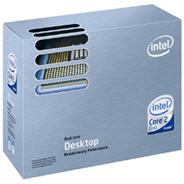Building a sub $1,000 gaming PC

The other day I was challenged to put together a gaming PC for less than $1,000. As it turns out, not only is it quite easy to hit this figure, but you also get a lot of hardware for your money.
Whenever I approach building a system for a specific amount of cash I always look at getting the most bang for the buck out of every component I select. This means choosing wisely and not spending crazy money on things that don't make a difference. For example, a fancy case might look cool but it doesn't offer any additional frames per second when playing Crysis or Call of Duty 4. Equally, a fancy heatsink and cooler might be essential when overclocking, but if the system if going to be running at stock speeds, a bundled assembly will do just fine.
Another thing that you need to keep an eye on is future upgrades. The final system here offers plenty of scope for future upgrading.
Let's go shopping!
Note: All prices quoted are from Newegg.com and a rounded to the dollar. Shipping not included. No rebates included. Monitor not included. Also, I have no affiliation with Newegg.com. I've chosen it because the site is easy to use, well stocked and prices are good. Feel free to shop around.
Next -->
CPU - Intel E6750

There's not much to say about this processor that hasn't been said before - but basically it boils down to the E6750 being powerful yet cheap. Also, you have a lot of upgrade room because most motherboards that support the dual-core Core 2 Duo processors also support the Core 2 Extreme, which means that a year from now you'll be able to splash out another couple of hundred bucks and give your system a massive performance boost.
Price: $190
Motherboard - MSI P6N SLI-FI nForce 650i
This board is built around the nVIDIA 650i chipset and comes with pretty much everything you expect from a board these days - PATA and SATA, USBs, gigabit LAN, 8 channel audio.
Price: $105
Graphics card - EVGA 8800GT 512MB
The EVGA 8800GT 512MB is a pretty spectacular card given a price tag of $250. This card should allow you to play any game on the market at high quality and still deliver good frame rates. You can even squeeze about 40 frames per second out of Crysis at running in high settings mode at 1024 x 768. Oh, and this card supports DirectX 10.
Price: $250
Next -->
RAM - A-DATA DDR2 800
Here I've chosen RAM by A-DATA. Despite the low price, this is high quality RAM that will deliver excellent performance and offer you a high level of stability. Also, I've gone for 2GB because for most gaming needs this is ample. If you want to go for 3GB (the maximum that you can access under a 32-bit OS) then add 2 x 512MB sticks to the order, but the performance gains won't be huge.
Price: $43
Hard drive - Western Digital Caviar SE 250GB
If you don't think that 250GB is enough space for you, then you could add a second drive to the system and still keep the price under $1,000.
Price: $65
PSU - MSI TurboStream 600W
The MSI TurboStream 600W PSU not only delivers all that this system will need now, but it will also allow for some future upgrading - such as a graphics card upgrade, adding more drives or upgrading the CPU. This PSU is rated at 80% efficient but for the price you don't get useful features such as modular cabling.
Price: $85
Next -->
Optical drive - Samsung 20X DVD +/- burner
Price: $27
Case - Foxconn TLA787
Here I've gone for the Foxconn TLA787. This case is cheap, offers room for upgrades, isn't filled with sharp edges, and even comes with a PSU (you can't use it in this PC but it's handy as a bench PSU).
Price: $38
OS
Since this is a gaming PC, I can't recommend Windows Vista as the OS because the object here is to get the most bang for the buck, and Vista just doesn't give you that. This system we've built will run Vista just fine, but if gaming is your thing, it just doesn't deliver you the frames per second that it should. Maybe this is down to the OS or maybe the fact that ATi and nVIDIA are still in the process of maturing the drivers, but either way Vista isn't ready for gaming yet.
With that in mind I've gone for Windows XP Home OEM.
Price: $90
Final thoughts
Here's the complete parts list:
| Component | Price $ |
| Intel Core 2 Duo E6750 (2.66GHz) | 190 |
| EVGA nVIDIA 8800GT 512MB | 250 |
| MSI P6N SLI-FI NVIDIA nForce 650i SLI | 105 |
| A-DATA 2GB (2 x 1GB) DDR2 800 | 43 |
| Western Digital Caviar SE 250GB SATA | 65 |
| SAMSUNG 20X DVD±R DVD burner | 27 |
| MSI TurboStream 600W | 85 |
| Foxconn TLA787 | 38 |
| Windows XP Home SP2 OEM | 90 |
TOTAL | 893 |
What's surprising when you go through an exercise like this is how much you get for your money - this is a beefy system that offers a lot of power and the scope for a lot of future upgrades for well under $1,000.
Thoughts?
<< Home >>